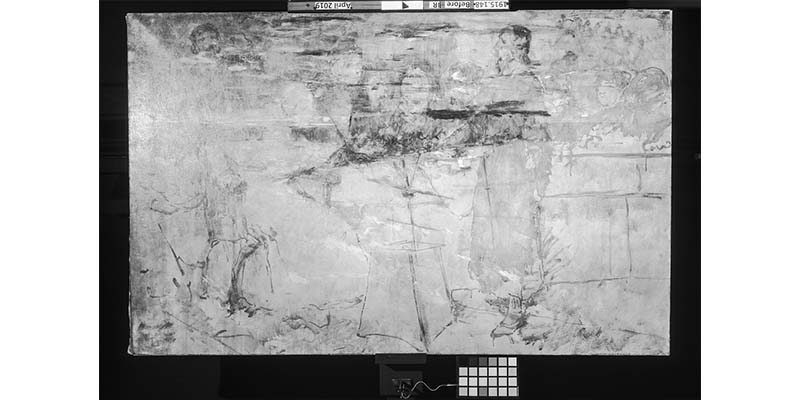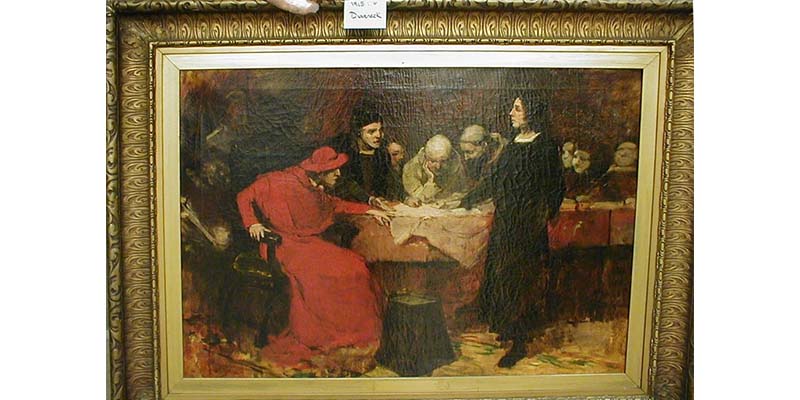- Art Home
- Exhibitions
-
Explore the Collection
- Explore the Collection Home
- African Art
- American Paintings, Sculpture and Drawings
- Contemporary
- Decorative Arts and Design
- East Asian Art
- European Paintings, Sculpture and Drawings
- Fashion Arts and Textiles
- Musical Instruments
- Indigenous American Art
- Photography
- Prints
- South Asian Art, Islamic Art and Antiquities
- Provenance and Cultural Property
- Conservation
- Meet the Curators
- Digital Resources
- Art Bridges Cohort Program
- Events & Programs Home
- Calendar
- Accessibility
- Adults
-
Families & Teens
- Families & Teens Home
- 10x10 Teen Art Expo
- Art on the Rise
- Art Together: Art Making for Families with Children Ages 3–5
- Boy Scouts / Girl Scouts
- CAM Kids Day
- Family Storytime and Gallery Walk
- Family Studio: Art Making for Families with Children Ages 6–12
- Games in the Galleries
- Members-Only Baby Tours
- Public Baby Tours
- REC Reads
- Rosenthal Education Center (REC)
- See Play Learn Kits
- Summer Camp
- Teachers
- Community Outreach
- Fundraisers
- Plan Your Own Event

- Art Home
- Exhibitions
-
Explore the Collection
- Explore the Collection Home
- African Art
- American Paintings, Sculpture and Drawings
- Contemporary
- Decorative Arts and Design
- East Asian Art
- European Paintings, Sculpture and Drawings
- Fashion Arts and Textiles
- Musical Instruments
- Indigenous American Art
- Photography
- Prints
- South Asian Art, Islamic Art and Antiquities
- Provenance and Cultural Property
- Conservation
- Meet the Curators
- Digital Resources
- Art Bridges Cohort Program
- Events & Programs Home
- Calendar
- Accessibility
- Adults
-
Families & Teens
- Families & Teens Home
- 10x10 Teen Art Expo
- Art on the Rise
- Art Together: Art Making for Families with Children Ages 3–5
- Boy Scouts / Girl Scouts
- CAM Kids Day
- Family Storytime and Gallery Walk
- Family Studio: Art Making for Families with Children Ages 6–12
- Games in the Galleries
- Members-Only Baby Tours
- Public Baby Tours
- REC Reads
- Rosenthal Education Center (REC)
- See Play Learn Kits
- Summer Camp
- Teachers
- Community Outreach
- Fundraisers
- Plan Your Own Event
Blog: CAM Uncovered
Blog: CAM Uncovered
- Home
- Plan Your Visit
-
Art
- Art Home
- Exhibitions
-
Explore the Collection
- Explore the Collection Home
- African Art
- American Paintings, Sculpture and Drawings
- Contemporary
- Decorative Arts and Design
- East Asian Art
- European Paintings, Sculpture and Drawings
- Fashion Arts and Textiles
- Musical Instruments
- Indigenous American Art
- Photography
- Prints
- South Asian Art, Islamic Art and Antiquities
- Provenance and Cultural Property
- Conservation
- Meet the Curators
- Digital Resources
- Art Bridges Cohort Program
-
Events & Programs
- Events & Programs Home
- Calendar
- Accessibility
- Adults
-
Families & Teens
- Families & Teens Home
- 10x10 Teen Art Expo
- Art on the Rise
- Art Together: Art Making for Families with Children Ages 3–5
- Boy Scouts / Girl Scouts
- CAM Kids Day
- Family Storytime and Gallery Walk
- Family Studio: Art Making for Families with Children Ages 6–12
- Games in the Galleries
- Members-Only Baby Tours
- Public Baby Tours
- REC Reads
- Rosenthal Education Center (REC)
- See Play Learn Kits
- Summer Camp
- Teachers
- Community Outreach
- Fundraisers
- Plan Your Own Event
- Give & Join
- About
- Tickets
- Calendar
- Exhibitions
- Blog
- Shop
Behind the Scenes in Conservation: An Intern’s Experience
by Caroline Shaver
6/19/2019
behind the scenes , Frank Duveneck , conservation , American Painting
As the 2019 Summer Paintings Conservation Intern, I’ve been helping the paintings conservator work on a painting by a well-known Cincinnati artist, Frank Duveneck (1848-1919).

In preparation for the museum’s major exhibition of Duveneck’s work (opening fall 2020), this painting is one of many that need conservation. The museum acquired it as a gift from the artist in 1915, and there are no previous records that it has ever been conserved.
Titled Steamer at Anchor, Twilight, Venice, the work depicts a large ship in the Venetian harbor. The paint is very sketchily applied with areas of thin washes and low, white impasto in both the sky and water.

Frank Duveneck (1848-1919), United States, Steamer at Anchor, Twilight, Venice, circa 1884, oil on canvas, Gift of the artist, 1915.148. Before treatment
Perhaps what is most striking about the painting are the dark lines visible through and under paint layers that do not match the image. During the internship I was able to learn about and perform different methods of documentation, including infrared imaging. When we took the infrared photo and rotated it 180° we were able to see that the dark lines form a sketch of several large vertical figures surrounded by some masonry stones.

Frank Duveneck (1848-1919), United States, Steamer at Anchor, Twilight, Venice, circa 1884, oil on canvas, Gift of the artist, 1915.148. Infrared image rotated 180 degrees
Upon first look, we believed the composition had similarities to another Duveneck painting in the lab, Reading to Chioggia Fisherman, the subject of another conservation blog post on view here. However, a later look at the other Duveneck paintings in the museum’s collection by those working on the exhibition led to the possibility that the underdrawing is more closely related to a smaller work called Columbus Before the Council of Salamanca. Both even contain the oddly shaped form in the foreground.

Frank Duveneck (1848-1919), United States, Columbus before the Council of Salamanca, circa 1876, oil on canvas, Gift of the artist, 1915.116
In addition to documentation, I’ve also learned a lot by performing structural repairs, surface cleaning, filling and inpainting in the conservation of Steamer at Anchor, Twilight, Venice. Observing the paintings conservator work on other paintings was another great opportunity for learning. As my first experience working in a museum, the internship has given me an inside look at how museums operate and the numerous people needed to keep the operation running smoothly. I look forward to returning to the Cincinnati Art Museum to see the full Duveneck exhibition next year!

Frank Duveneck (1848-1919), United States, Steamer at Anchor, Twilight, Venice, circa 1884, oil on canvas, gift of the artist (1915.148). After cleaning
Cincinnati, OH 45202
Toll Free: 1 (877) 472-4226
Museum Hours
Museum Shop
Terrace Café
Library
The Cincinnati Art Museum is supported by the generosity of tens of thousands of contributors to the ArtsWave Community Campaign, the region's primary source for arts funding.

Free general admission to the Cincinnati Art Museum is made possible by a gift from the Rosenthal Family Foundation. Exhibition pricing may vary. Parking at the Cincinnati Art Museum is free.
Generous support for our extended Thursday hours is provided by Art Bridges Foundation’s Access for All program.

General operating support provided by:



